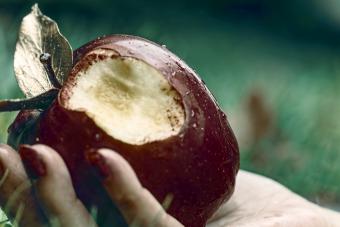
The Atacama Desert Cemetery, or the archaeological site of Chinchorro, lies in northern Chile in the world's driest desert. To the west of the desert lies the Pacific Ocean that runs near the town of Arica.
Discovery of the Atacama Desert Cemetery
In the early 20th century, German archaeologist Max Uhle discovered the Atacama Desert Cemetery, which contained a collection of mummies. Their burial was dated between 5000 and 500 BC. The observation that all the bodies had been mummified, no matter who they belonged to, piqued the interest of other archaeologists. While the ancient Egyptians mummified only those of high rank or status, the Chinchorro people mummified adults, children, newborns and even fetuses. Cremation was never part of this ancient culture.
Who Were the Chinchorro People?
Chinchorro means small boat. The Chinchorro people lived before the Inca Indians. They were fishermen, hunters and gatherers, residing in what is known today as northern Chile and southern Peru. This land was near river mouths, which provided many rich resources. So it is not surprising that this region served the inhabitants well.
Dr. Bernardo Arriaza and other experts have stated that the preservation of the dead by the Chinchorro people was an act of deep religious conviction. The mummification of all people, regardless of social status, showed that the Chinchorros felt a distinct connection between the worlds of the living and the dead.
The fact that they buried everyone the same way, even children, showed perhaps this was due to the society's deep sense of affection and grief.
Techniques of Preservation
The mummies of Chinchorro found in the Atacama Desert Cemetery, are the oldest mummies ever found in the world today. The oldest Egyptian mummy dates back to 3000 BC, while the Chinchorro bodies date between 5000 and 6000 BC.
These mummies were wrapped in reeds and left outside to dry from 40-60 days. There were two methods used to preserve the bodies:
- The black mummy technique was a reassembling of body parts. First, the corpse's head, arms and legs were removed. After that, the skin was usually removed by heat-drying the body and stripping the flesh from the bones. The skull was cut in two and the brain was removed; then the skull was stuffed with material and sewn together again. After the body parts were reassembled, an ash paste was used to cover the body and fill in all the holes left open. The paste was also used to fill out the facial features. The person's skin was then refitted to the body. Sometimes skin of a sea lion was also used. A black wig was created to place on top of the head. Then the skin was painted with manganese. This caused the mummy to have a black color.
- The red mummy technique was where the internal organs were removed by placing incisions in the shoulders and trunk. The organs were taken out so that the body could be dried. The head was then cut off and the brain was taken out. The corpse was embalmed with some sort of vegetable matter to reshape it, and to give it a normal-looking form. Sometimes sticks were used to make it stronger and keep it from falling apart. The incisions were sewn up. A wig made from tassels of human hair was placed on the head. The head was reattached to the corpse. A clay hat held the wig in place. Then everything but the wig, and sometimes the face, was painted with red ochre.
Burial
These South American mummies were buried in tombs, or dug-out pits, fortified with large rocks or stones. Some were five-to-six-feet deep, while others were shallow graves.
Viewing Mummies
If you desire to see a mummy from the ancient Chinchorro civilization, they can be found at the Archaeology Museum of San Miguel de Azapa at the University of Tarapacá in Chile. The museum is open to the public.







